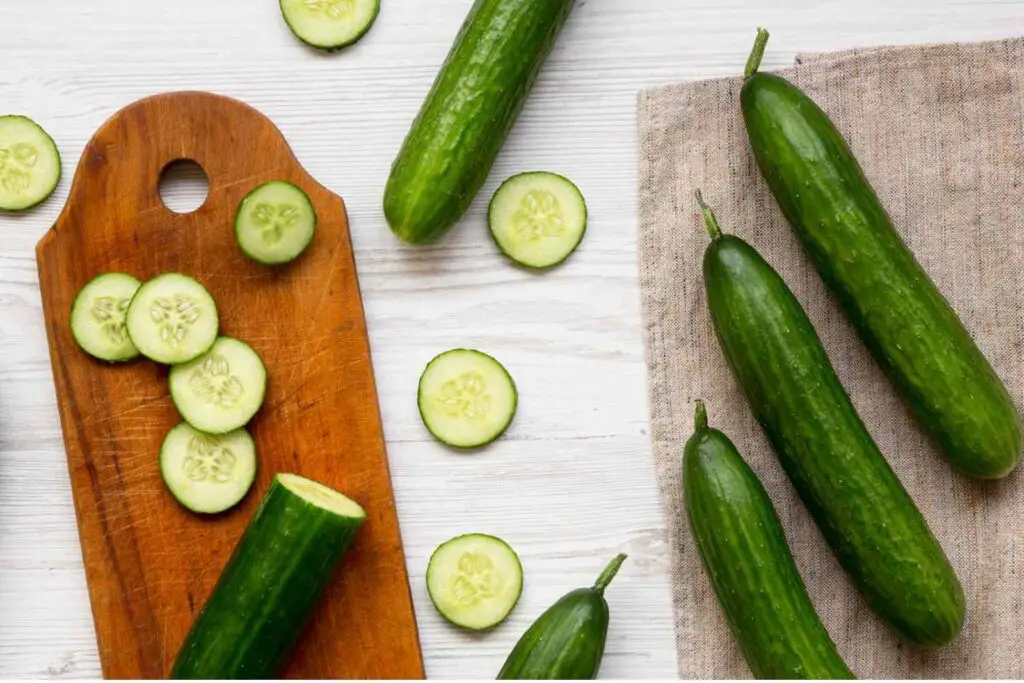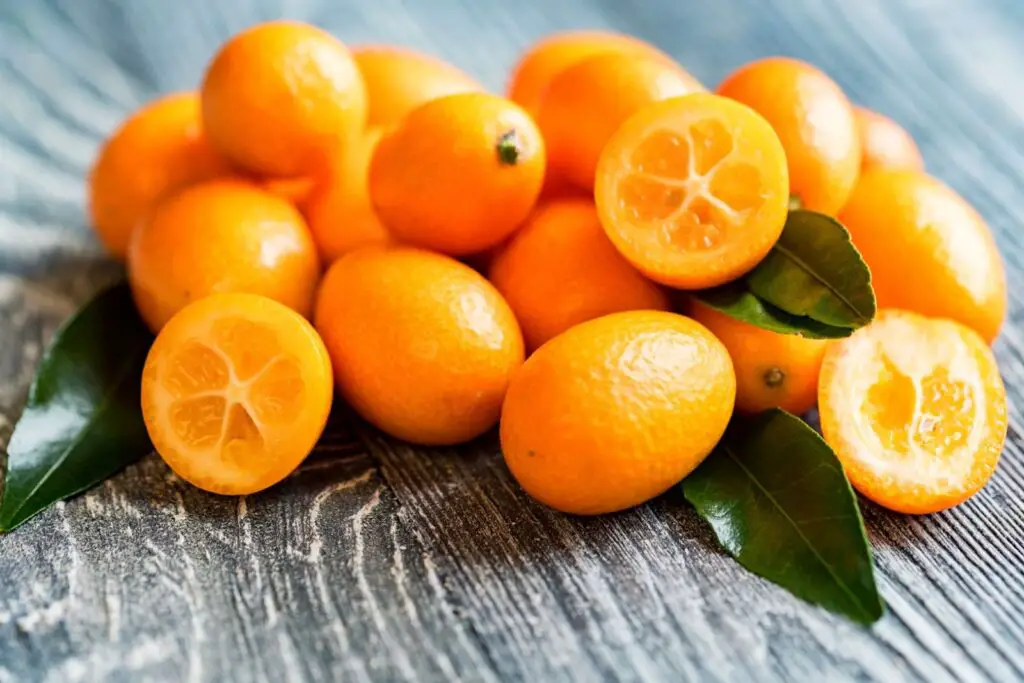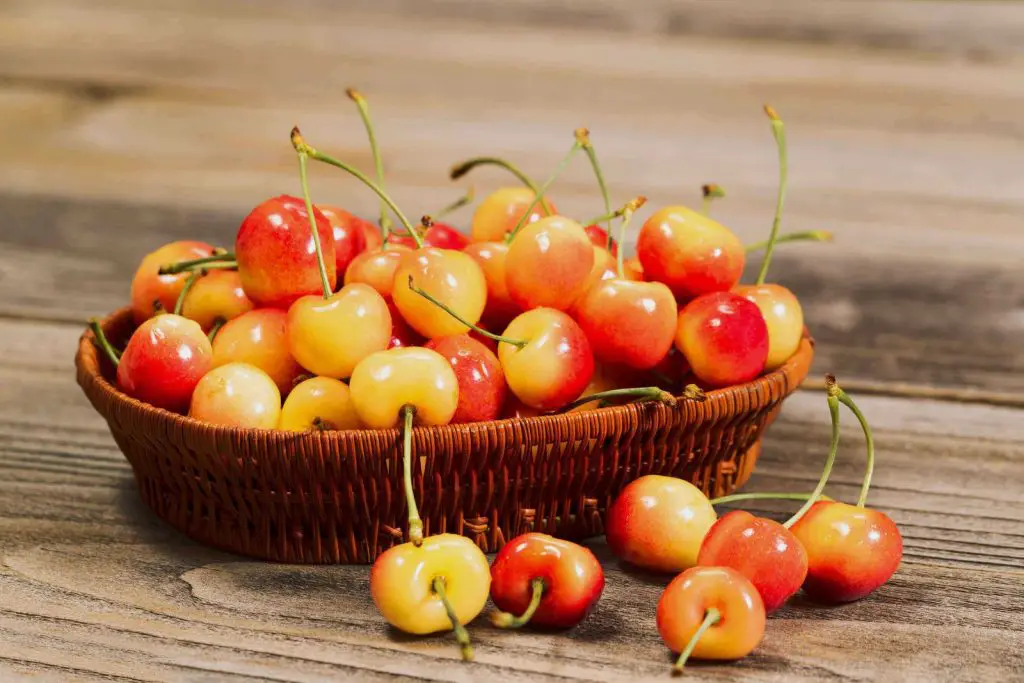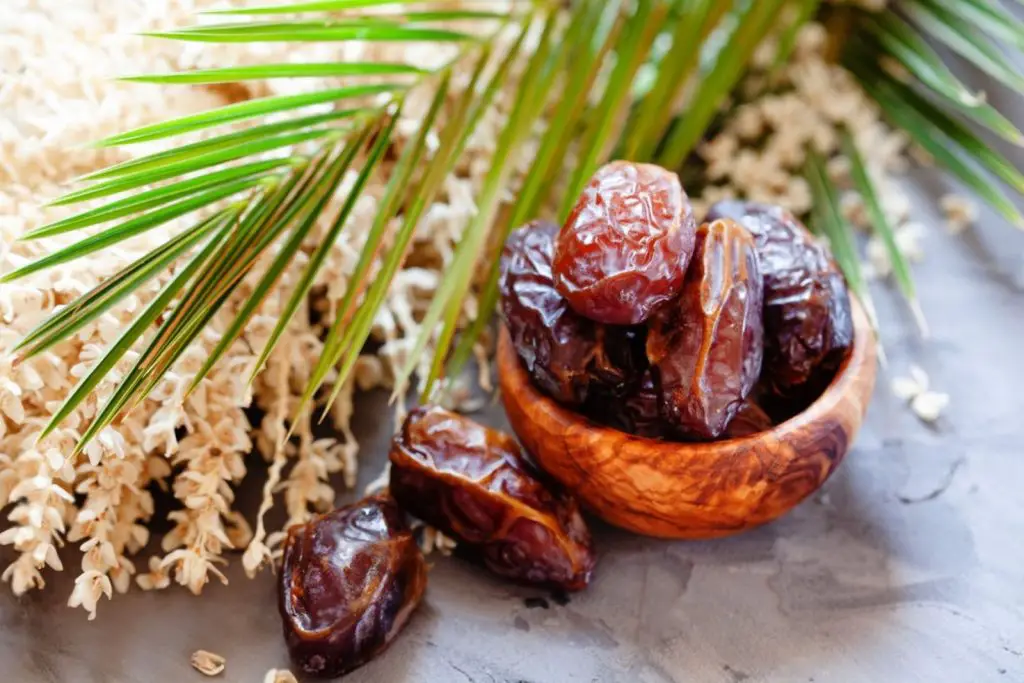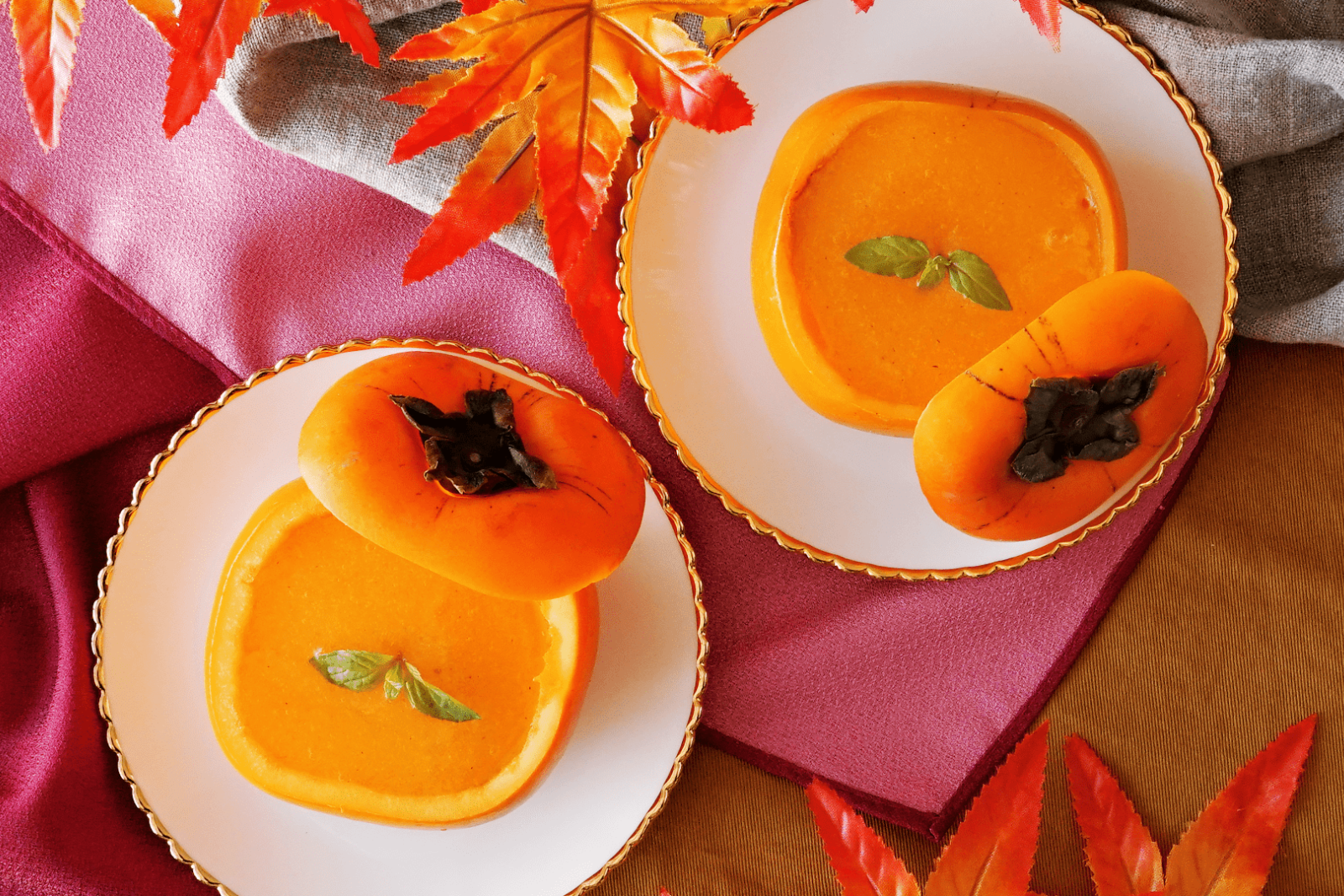
Persimmons are delicious, sweet, and versatile fruits that come in different varieties, such as Fuyu and Hachiya. They are often enjoyed fresh, but you can also make a luscious puree out of them to use in various recipes. Freezing persimmon puree is an excellent way to preserve the fruit’s natural goodness and enjoy its flavor even when it’s not in season. By following these simple steps, you can freeze persimmon puree properly and keep it ready for use whenever you need it. This article presents a step-by-step guide on freezing persimmon puree to ensure it maintains its quality and taste for future enjoyment.
Here’s a guide on how to freeze persimmon puree:
Step 1: Select ripe and juicy persimmons
Selecting ripe and juicy persimmons is crucial for creating a flavorful and delicious persimmon puree. When the fruit is ripe, it has reached its optimal level of sweetness and juiciness, making it ideal for pureeing. Here’s why this step is essential:
- Enhanced Flavor: Ripe persimmons have fully developed their natural sugars, which results in a sweeter taste. The sweetness of the fruit contributes to the overall flavor of the puree, making it more enjoyable and satisfying to eat.
- Smooth Texture: Ripe persimmons are soft and tender, which makes them easier to blend into a smooth puree. They break down more easily during the blending process, resulting in a creamy and consistent texture.
- Better Nutrition: As persimmons ripen, their nutrient content also reaches its peak. Ripe persimmons are rich in vitamins A and C, fiber, and various antioxidants. By choosing ripe fruit, you ensure that your persimmon puree retains its nutritional benefits.
- Easy Preparation: Ripe persimmons require less effort to prepare for pureeing. The soft texture allows you to peel and remove any seeds or stems effortlessly, streamlining the puree-making process.
- Longer Shelf Life: When you start with ripe persimmons, the resulting puree will be of higher quality, and freezing it will better preserve its flavor and nutritional value. This ensures that you can enjoy the taste of fresh persimmons for an extended period, even when they are out of season.
To identify ripe persimmons, look for fruit that is plump, with smooth and glossy skin. They should yield slightly to gentle pressure without feeling mushy. Avoid any persimmons that have soft spots, bruises, or mold, as they may affect the taste and quality of the puree. By starting with the best possible fruit, you set the foundation for a delicious persimmon puree that can be enjoyed in various dishes and desserts throughout the year.
Step 2: Wash and peel the persimmons
Washing and peeling the persimmons is an essential step in preparing persimmon puree for freezing. Properly cleaning and removing the skin ensures that the resulting puree has a smooth texture and a pleasant flavor. Here’s why this step is important:
- Removal of Impurities: Washing the persimmons under cool, running water helps remove any dirt, dust, or residues that might be present on the skin. This step is especially crucial if you’re using fresh persimmons from the market or your garden, as it ensures that no contaminants end up in the puree.
- Elimination of Bitterness: The skin of certain persimmon varieties, particularly the Hachiya variety, can have a slightly bitter taste. Peeling the persimmons helps eliminate this bitterness, resulting in a sweeter and more enjoyable puree.
- Enhanced Texture: Persimmon skins can be tough and fibrous, which can affect the smoothness of the puree. By removing the skin, you ensure a silky and velvety texture that blends seamlessly in various recipes.
- Improved Aesthetics: Peeling the persimmons also enhances the visual appeal of the puree. The smooth, vibrant orange flesh looks more attractive in recipes, making your dishes more visually appealing.
- Easier Blending: Soft and ripe persimmon flesh is delicate and easy to blend, but the skin can be more resistant. Removing the skin before pureeing ensures that the blending process is efficient and results in a consistent, lump-free puree.
- Enhanced Flavor Infusion: Without the bitterness from the skin, the natural sweetness and unique flavor of the persimmons become more pronounced in the puree. This allows the persimmon flavor to shine through in your recipes.
When peeling the persimmons, you can use a vegetable peeler or a sharp knife. Ensure that you remove all the skin, leaving only the tender flesh for blending. The peeling process is straightforward, and it significantly contributes to the overall quality and taste of the persimmon puree. Once you’ve completed this step, you’ll have a clean and smooth persimmon base that’s ready to be transformed into a versatile puree and preserved for future use.
Step 3: Remove any seeds and stems
Removing any seeds and stems from the persimmons is essential to ensure a smooth and pleasant persimmon puree. The presence of seeds and tough stems can negatively impact the texture and flavor of the puree. Here’s why this step is crucial:
- Bitterness Elimination: The seeds and stems of persimmons can have a slightly bitter taste, especially in some varieties like Hachiya persimmons. By removing these parts, you prevent any bitterness from transferring to the puree, resulting in a sweeter and more enjoyable final product.
- Smooth Texture: Seeds and stems can be fibrous and hard, which can lead to a grainy texture in the puree. By eliminating them, you ensure that the persimmon puree will be smooth and creamy, ideal for use in a variety of recipes.
- Consistent Flavor: Removing seeds and stems allows the natural flavor of the persimmons to shine through. This results in a more consistent and intense persimmon flavor throughout the puree, enhancing the overall taste of your dishes.
- Easier Blending: Cutting the persimmons in half and removing the seeds and stems makes the fruit easier to blend. The absence of these tougher parts ensures that the blending process is efficient and smooth.
- Aesthetics: When you remove the seeds and stems, the puree becomes visually appealing, with a uniform and vibrant color. This is particularly important if you plan to use the puree in visually appealing dishes like desserts and sauces.
To remove the seeds and stems, cut the persimmons in half and use a spoon or your fingers to scoop out the seeds and any tough central stems. Ensure that no seeds or hard parts remain in the flesh that you plan to puree. Once you’ve completed this step, you’re left with a seedless and stemless persimmon pulp that’s ready to be transformed into a delicious, smooth puree.
Step 4: Blend into a smooth puree
Blending the peeled and deseeded persimmons into a smooth puree is a critical step in the process of freezing persimmon puree. This step ensures that the persimmons are transformed into a consistent, creamy texture that is easy to work with and preserves their natural flavors. Here’s why this step is important:
- Texture Consistency: Blending the persimmons creates a uniform texture, free of lumps or chunks. This consistency allows the puree to be versatile and easily incorporated into various recipes without altering their texture.
- Enhanced Flavor: During blending, the flavors of the persimmons are thoroughly combined, resulting in a well-balanced and concentrated taste. A smooth puree guarantees that each spoonful carries the full essence of the ripe persimmons.
- Browning Prevention: Persimmons have a tendency to brown when exposed to air due to enzymatic reactions. By adding a splash of lemon juice while blending, the acidic nature of the lemon juice helps prevent browning and maintains the vibrant orange color of the puree.
- Flavor Enhancement: Lemon juice not only prevents browning but also enhances the overall flavor of the persimmon puree. The subtle tanginess of the lemon juice complements the sweetness of the persimmons, resulting in a more complex and delightful taste.
- Longer Shelf Life: The blending process creates a homogeneous mixture that aids in better preservation during freezing. The uniformity of the puree reduces the risk of ice crystals forming, which can affect the taste and texture when thawed.
To blend the persimmons, you can use either a blender or a food processor. Both appliances work well to achieve a smooth consistency, but a high-powered blender is more efficient in breaking down the fruit fibers completely. Start by placing the peeled and deseeded persimmon pieces into the blender or food processor. If using a blender, you may need to add a splash of water to facilitate the blending process. Blend until the persimmons are fully pureed, and the mixture is smooth and creamy.
Can I add sugar or other sweeteners to the persimmon puree before freezing?
While it is possible to add sugar or sweeteners to the puree before freezing, it is generally recommended to freeze plain persimmon puree. This allows for greater flexibility in using the puree in both sweet and savory recipes.
Should I add lemon juice to the persimmon puree before freezing?
Adding lemon juice to the persimmon puree before freezing is optional. Lemon juice can enhance the flavor and prevent browning, but if you prefer the natural taste, you can freeze the puree without it.
Step 5: Package the persimmon puree
Packaging the persimmon puree properly is essential to ensure its quality and prevent freezer burn during freezing. Choosing appropriate containers and leaving enough space for expansion are key aspects of this step. Here’s why packaging the persimmon puree correctly is important:
- Prevent Freezer Burn: Freezer burn occurs when moisture from the food evaporates and forms ice crystals on its surface. By using airtight containers or freezer-safe resealable plastic bags, you create a barrier that prevents air and moisture from entering the package. This reduces the risk of freezer burn and helps maintain the freshness of the persimmon puree.
- Retain Flavor and Texture: Properly sealed containers preserve the persimmon puree’s original taste and texture, ensuring that it remains as close to its freshly blended state as possible when thawed.
- Easy Storage: Using airtight containers or resealable bags allows for efficient use of freezer space. The containers can be stacked neatly, making it easy to organize and locate the persimmon puree in the freezer.
- Portion Control: Packaging the puree in individual or smaller-sized containers allows for better portion control. You can freeze the puree in quantities that match your typical recipe requirements, reducing waste and ensuring you only thaw what you need.
- Convenient Thawing: Airtight containers and resealable bags facilitate easy thawing. You can defrost only the desired amount of puree without having to thaw the entire batch, which is particularly useful for recipes that call for a specific amount.
When packaging the persimmon puree, leave some space at the top of the containers or bags to allow for expansion during freezing. As liquids freeze, they expand, and if the container is filled to the brim, it may crack or burst. Leaving some space prevents this and ensures that the container remains intact during freezing.
You can use various types of airtight containers, such as glass or plastic jars with screw-on lids or plastic containers with snap-on lids. Freezer-safe resealable plastic bags are a space-saving alternative, especially if you plan to freeze the puree in smaller portions.
Can I freeze persimmon puree in ice cube trays?
Yes, freezing persimmon puree in ice cube trays is a convenient method for portioning smaller quantities. Once frozen, transfer the puree cubes to a freezer-safe bag for easy storage and use in various recipes.
Can I freeze persimmon puree in silicone molds?
Yes, freezing persimmon puree in silicone molds can be a convenient way to create single-serving portions or fun shapes for desserts and smoothies. Once frozen, transfer the puree shapes to airtight containers or bags for storage.
Can I freeze persimmon puree in glass jars?
Yes, you can freeze persimmon puree in glass jars, but it’s essential to leave enough headspace to accommodate expansion during freezing. Using wide-mouthed jars and avoiding overfilling will help prevent breakage.
Step 6: Label the containers
Labeling the containers or bags with the date of freezing is a crucial step in the process of freezing persimmon puree. Keeping track of the freezing date helps you manage your frozen stock effectively and ensures that you use the oldest puree first. Here’s why labeling is important:
- Freshness Management: Persimmon puree, like any frozen food, has a limited shelf life. By labeling each container with the date of freezing, you can easily determine how long the puree has been in the freezer. This allows you to use the oldest puree first to ensure you consume it while it’s still at its best quality.
- Preventing Waste: Without proper labeling, it can be challenging to know when you froze each batch of persimmon puree. As a result, you might end up forgetting about certain containers, leading to freezer burn or extended storage that affects the puree’s taste and texture. Labeling ensures that you are aware of the freezing date, reducing the likelihood of wasting any of the frozen puree.
- Better Meal Planning: When you know the freezing date of each container, you can plan your meals and recipes more efficiently. This way, you can incorporate the persimmon puree into your cooking based on its freshness, optimizing its use in various dishes.
- Inventory Management: If you have multiple containers of persimmon puree in the freezer, labeling them allows you to maintain a clear inventory. You can easily see how much puree you have on hand and when each batch was frozen, making it easier to plan your meals and shopping lists.
- Quality Assurance: Persimmon puree can undergo changes in taste and texture over time due to freezer storage. By using the oldest puree first, you ensure that you consume it while it’s still at its peak quality, delivering the best flavor and texture to your dishes.
To label the containers or bags, use adhesive labels or masking tape, and write down the date of freezing using a permanent marker. Include the day, month, and year to provide specific information about when the puree was frozen. Stick the label on the container or bag in a visible location, such as the lid or the front surface, for easy identification.
Step 7: Freeze the persimmon puree
Freezing the persimmon puree is the final step in the process of preserving it for future use. Properly freezing the puree ensures that it remains safe to eat, maintains its quality, and is easy to store and use when needed. Here’s why freezing the persimmon puree in a flat position is important:
- Even Freezing: Placing the sealed containers or bags in a flat position allows the persimmon puree to freeze evenly. An even freeze ensures that the puree maintains a consistent texture and taste throughout, without any areas being over- or under-frozen.
- Faster Thawing: Storing the puree in a flat position creates a thinner layer of frozen puree, which means it will thaw more quickly when you decide to use it. This can be especially beneficial if you need to thaw a small amount of puree for a specific recipe or meal.
- Efficient Use of Space: Laying the containers or bags flat maximizes the use of freezer space. Flat packages can be stacked and organized more efficiently, allowing you to make the most of the available space in your freezer.
- Easy Storage and Retrieval: Flat storage allows the containers or bags to be neatly stacked on top of each other, making storage and retrieval much more straightforward. You can easily see and access the different batches of frozen persimmon puree.
- Preventing Spills: Laying the containers or bags flat reduces the likelihood of spills or leaks during freezing. The puree will settle evenly within the containers or bags, preventing any unexpected messes in the freezer.
When freezing the persimmon puree, ensure that the containers or bags are properly sealed to maintain the quality and freshness of the puree. Leave some space at the top of the containers or bags to allow for expansion during freezing. This precaution prevents the containers from bursting as the puree freezes and expands.
Before placing the containers or bags in the freezer, make sure the freezer temperature is set to the appropriate level for freezing perishable foods. Ideally, it should be at or below 0°F (-18°C) to maintain the quality and safety of the persimmon puree.
How long can I keep frozen persimmon puree?
Frozen persimmon puree can be stored for up to 6 to 8 months in a standard home freezer at 0°F (-18°C). Properly labeled and sealed containers help maintain its quality and prevent freezer burn.
Step 8: Thaw and use the puree
Thawing the frozen persimmon puree properly is essential to maintain its taste, texture, and nutritional value. Slow and controlled thawing helps preserve the integrity of the puree and ensures that it remains safe to eat. Here’s why thawing the persimmon puree overnight in the refrigerator is recommended:
- Gentle Thawing: Thawing the persimmon puree in the refrigerator is a slow and gentle process. The cold temperature of the fridge prevents the puree from experiencing temperature shocks, which can affect its texture and taste.
- Maintaining Quality: Slow thawing helps preserve the original taste and texture of the puree. Rapid thawing, such as using a microwave or running hot water over the container, can result in uneven thawing and potential loss of quality.
- Avoiding Bacterial Growth: Thawing in the refrigerator minimizes the risk of bacterial growth. The low temperature inhibits the growth of harmful bacteria, ensuring that the puree remains safe to eat.
- Ready-to-Use Convenience: Thawing the puree overnight means it will be ready to use the next day. This convenience allows you to incorporate the persimmon puree seamlessly into your recipes without any extra preparation.
- Versatility in Recipes: Thawed persimmon puree can be used in a wide range of recipes, such as smoothies, desserts, sauces, baked goods, and more. Its smooth texture and rich flavor make it a versatile ingredient in both sweet and savory dishes.
When thawing the persimmon puree, place the sealed container or bag in the refrigerator. This prevents any external odors or flavors from affecting the puree during the thawing process. Thawing overnight or for approximately 8 to 12 hours is usually sufficient to achieve a fully thawed state.
Avoid thawing the persimmon puree at room temperature, as this can lead to more rapid and uneven thawing, potentially compromising the quality and safety of the puree.
Thawed persimmon puree can be stored in the refrigerator for up to 2 to 3 days. If you don’t plan to use it immediately, consider portioning the puree into smaller quantities before freezing, so you only thaw what you need for each recipe.
Can I use frozen persimmon puree directly in recipes without thawing?
Yes, you can use frozen persimmon puree directly in recipes without thawing, especially in dishes that involve cooking or blending. The puree will thaw during the cooking process, and any minor ice crystals will dissolve.
How do I defrost frozen persimmon puree quickly?
Answer: To defrost frozen persimmon puree quickly, place the sealed container or bag in a bowl of cold water. Change the water every 30 minutes until the puree is thawed. Alternatively, use the defrost setting on a microwave, but be cautious not to overheat it.
Other related questions
Can I refreeze persimmon puree?
No, it is not recommended to refreeze persimmon puree once it has been thawed. Refreezing can lead to a loss of quality, texture, and taste. It’s best to portion the puree before freezing and only thaw what you plan to use to maintain its freshness and ensure the best results in your recipes.
How do I know if persimmon puree has gone bad after being frozen?
To determine if persimmon puree has gone bad after being frozen, look for signs of spoilage such as off smells, unusual colors, or the presence of mold. An altered texture, excessive ice crystals, or an unpleasant taste may also indicate spoilage. If any of these signs are observed, it is best to discard the puree to avoid consuming potentially unsafe or degraded food.
Can I mix persimmon puree with other fruits before freezing?
Answer: Mixing persimmon puree with other fruits before freezing is possible, but it’s essential to consider the compatibility of flavors and textures. Pureeing each fruit separately and then blending them when needed offers more flexibility in recipes.

